Anyone use DRIcore flooring?
I've been doing some reading about DRIcore flooring systems and it seems very good. Anyone have experience with it?
I noticed in the instructions they recommend installing interior walls on top of the DRIcore. Has anyone done this? What would be the advantage? Would I still need pressure treated base plates?
Thanks
Here is a link that might be useful: DRIcore
Comments (34)
monica_thompson
18 years agoI installed them in our old house, and it was really easy, and I was satisfied with the results. It made the basement warm enough to let the kids use it as a play room in the winter. The walls get installed on top so they would be protected from the moisture under the dricore floor. I would guess you would not need the pressure treated base plates anymore, since they would be protected from moisture. We did not install walls over our floors (we simply painted the walls) so I haven't had any experience with it, but due to the variations in the walls and floors, I think that installing over the floor would give a cleaner more seamless finish as well. Good Luck!
Monicaamyf5
16 years agoWe're about to have our basement finished and are interested in Dri-core to go between poured concrete floor and carpet. I see this discussion is a year old so I was hoping to get some updated opinions on Dri-core. Anyone living with this stuff and loving it or hating it?
From what I've read, the main down-side seems to be the possibility of it getting wet. I was thinking that's not very likely because of the plastic feet, but I don't really know. Also, we are evaluating bids made by two contractors. One has no experience putting down Dri-core. Is this a big deal or can any handy person who finishes basements for a living handle the installation?
Related Professionals
Hampton General Contractors · Jefferson Valley-Yorktown General Contractors · Lighthouse Point General Contractors · Perrysburg General Contractors · Tamarac General Contractors · West Babylon General Contractors · Bel Air North Interior Designers & Decorators · Belle Glade Interior Designers & Decorators · Fort Smith Interior Designers & Decorators · Gretna Flooring Contractors · Powell Flooring Contractors · Redmond Flooring Contractors · Whittier Flooring Contractors · Winchester Flooring Contractors · Fullerton Flooring Contractorswbralick
16 years agoI just finished a couple of rooms in the basement with it and I like it so far. I share your concern about getting it wet; these rooms are for the kids and there's always a possibility of spills. Or, what happens if the hot water heater lets go?
From what I understand, the material DriCore is made of (OSB) is less likely to warp than plywood. Of course, is there a flooring system that could withstand a basement flood without needing replacement? Probably not.
It's REALLY easy to put down, especially if you have a table saw. DriCore sells shims that work pretty well if you're diligent about checking and re-checking. There are spots where I hear the DriCore tap the concrete below when I walk across them, particularly in the corners where it's easy to miss the need for a shim.
By the way (I mentioned this in another thread) there's a similar product called SubFlor out there, but I think it comes out of the same factory as DriCore.
Bill
ddavis_2007
16 years agoI was building my lower level office 5 years ago when I was BLESSED with finding DriCore as we were walking down an isle at home depot. It was the perfect solution for me. We had problems with an occasional wet cement floor and I was afraid to proceed. When I found dricore I read up on it in detail.
First we extended all outside drains and looked for anyplace bringing in water. We had a few cracks in the floor which was previously just a basement.
We patched any areas or cracks on the floor, rented a floor scrubber and gave the concrete a complete cleaning (my option). I drilocked all outer borders and any cracks.Then my husband and I (mostly I) installed it. You could not ask for anything easier. I personally did all the tricky cuts with a electric saw and my husband cut some with the table saw.
You want to make sure it's level as you go or and your edges are all lined up. The shims do need to be used on low spots.
My office is 20' x 30'.As of today, it's been the best investment I made. I know there is water that comes up occasionally because I see it drain into the heater room, but it has never come through or damaged my top flooring.
The DriCore is made to ventilate so you don't get that basement odor and it allows the moisture to circulate.
It was alittle more expensive but WELL worth it. I needed to be able to trust the floor with all of the electric cords I have with my computer equipment.
The extra bonus is it helps keep the room warmer, I have no heat or air conditioning down, a vinyl floor and throw rugs, but a space heater in winter and fan in summer work fine.
two thumbs up for me!
I just recommended it to my daughter who is redoing their basement and has some moisture issues.good luck,
darleneekoreilly
16 years agowhen doing dricores in the basement, you only need it in the finished part right? Our dry basement is probably going to be 3/4 finished and the rest storage. any thoughts?
peegee
16 years agoFor what it's worth, about 2 years ago I installed a dri-core floor in my basement studio; the remainder of the basement is unfinished. I love the floor, but it was a lot more work and more money than anticipated. After installation of the dri-core panels, special 4'x4' 1/4" subflooring panels were installed on top with a zillion screws; each had to be dabbed with a skim coat and sanded before the intended finshed floor, Armstrong commercial tiling, could be installed. When I originally ordered the tiles, I thought they could be installed directly over the Dri-core, but learned the panels are necessary. Even with all the extra work, I am very pleased - I was ultra careful and slow joining all the dri-core tiles snuggly, using shims as needed, and, of course with all the pounds of screws, knock on plywood, have a very solid and comfy floor. I have a pellet stove in the room, that the floor is built around, and the floor is never very cold, even in the dead of winter.
ekoreilly
16 years agoRecently I saw another type of manufactured flooring similar to the plastic feet of dricore, but was ALL plastic with no wood on top. Claimed that this was the way to go, not putting wood on top and showed dricor with mold all over it. ALll I could think of is they submerged dricor for a while to get it moldy looking. has anyone seen this all plastic "dricor lookalike"?
peiyi
Original Author16 years agoHi Peegee,
What did you use over the dricore before installing the tiles? I didn't know that was possible. I will have a small tiled section of my basement, and I didn't know how I would handle the height transition. Installing the tile over the dricore would solve my problem.
lewisnc100
16 years agoThe other type you saw could be platon rolls. Goes down in long sheets that are sealed together with caulk. Underlayment T&G or OSB sheets go on top for carpet.
peegee
16 years agoHello Peiyi - Sorry for the delay in responding. Once the Dri-core was installed, "Multiply" sheets of 1/4" plywood were installed with non-rusting skrews. The sheets are 4'X4', and in my area, at a big box home store, are sold in the flooring dept. These more expensive sheets provide a very smooth surface suitable for installation of vinyl flooring.
Here's a quote from Dri-core's installation guide:
Sheets and Tiles - A 1/4" plywood underlayment approved for use with sheet vinyl or adhesive-backed vinyl tiles should be fastened to the DRIcore panels. We do not recommend lauan plywood as an underlayment. Use 5/8" fasteners that do not penetrate the moisture barrier on the underside of the DRIcore panels. Do not glue the plywood underlayment to DRIcore panels. Do not glue adhesive-backed vinyl tiles directly to DRIcore panels. Glue the vinyl floor to the plywood underlayment according to the vinyl manufacturer's installation instructions."
Also, importantly, all seams and all screws should be skim patched to be certain of avoiding any imperfections telegraphing through to the surface.
Here is a link that may be helpful re: the type of underlayment available in my area: http://www.multiplyplywood.com/home.html
As I said earlier, I found the use of the underlayment significantly increased the overall cost of the project - in my area of the Northeast, they are currently selling for nearly $13. per panel!
As far as the skim patch goes, my local store is selling a product called "Skim Patcher" by Henry, which is a powder that is mixed for application. Frankly, at the moment, I can't recall what product I used, but thought it was a premixed product installed with a scraper. I remember every area skim coated had to be carefully sanded smooth.For those concerned about moiture under the floor, Dri-core recommends increasing airflow through creation of floor registers/vents:
"Vent cover installation for increased airflow. Increasing air flow under DRIcore panels can be accomplished easily by installing vent cover openings into the finished flooring and DRIcore panels every 10Â around exterior perimeter walls. De-humidification and proper mechanical air handling systems will help ensure continued air flow for moisture and humidity reduction. To finish off, install a low profile vent cover and inspect periodically"
Good luck with your project! I'd be interested in knowing how your project comes out, and if others are as satisfied as I am.microxl
16 years agoTo answer ecoreilly's question about the product he saw, I think it was more likely one called "ThermalDry". It is an all-plastic product that comes in 1' x 1' interlocking squares and is only 3/8" thick (as opposed to DriCore's 7/8")since it has no OSB type planking on top of it. Functionally it seems to work the same way as the DryCore/SubFloor products by creating a space for air circulation and a thermal/vapor barrier. The bad news is that it is a franchised product only available through dealers. As such, it probably costs a ton more money in that you are paying for the product, the franchisee's costs, the installer and who knows what else! If you Google ThermalDry you will just come up with listings for dealers. Whatever flooring you use goes directly over the plastic tiles with no need for an OSB layer. Of course the R value is probably a little less due to the lack of the OSB.
If money were no object I would prefer ThermalDry over DriCore simply due to peace of mind should I have some flooding event in the basement...manmade or natural. With DriCore/Subfloor, if the OSB layer gets saturated, mold is the inevitable result. And if you have built walls on top of it, what then? I read of one account where water got into all the little hollow feet on the top-side of the platic layer...with no way to get out. The stuff had to be pulled up and thrown out. With the ThermalDry they could be reinstalled after dry. The other plus for ThermalDry is that it is thin conserving headroom which in a basement is often an issue.
Hopefully the vast majority of people using DriCore will/would never confront this.
I have a question regarding DriCore. Am I to understand that even when finished you end up with a 1/4" gap all around the permimeter of the room regardless of wood,tile, carpet???? In other words, no baseboard molding? I can see where this would be necessary but does it bother any of you who have it?
lewisnc100
16 years ago1/4" expansion space around the perimeter will not prevent the installation of molding.
microxl
16 years agoNo, I know the size of the gap would not prevent the installation of trim molding. I thought that the gap had to remain open to allow for the air space below the floor to "breath". In the DriCore promo brochures they even show the installation of floor registers placed at 8' to 10' intervals in the floor to allow for (I assume) air circulation and abatement of any moisture that might accumulate under the floating floor.
lewisnc100
16 years agoThe floor registers are listed under their special installation instructions for additional air flow and leakage remediation. But the install still shows the baseboard molding installed normally.
sniffdog
16 years agoIs it true that a 2' x 2' sheet of Dricore is around 6 dollars retail? That would mean 48 dollars for a 4' x 8' section - and then another 48 dollars to cover that with the 1/4 inch smooth finish underlayment if you want to lay vinyl? That seems incredibility expensive for a basement.
I am thinking about my basement which is large (over 2000 sq feet) and the dricore solution would be too expensive for me - and I want to use a lot of the vinyl flooring that looks like wood. I have watched a Mike Holmes episode where he used 1/2 rigid foam board under 5/8th inch T&G plywood anchored in with tapcon screws to make a subfloor. That solution would run about 32 dollars for a 4' x 8' section. Any cons for this type of subfloor - assuming the basement is proven to be dry? Also - could 1/4 inch foam board that comes in a 4' x 50' folded bundle be used in place of the 1/2 inch foam board? That would bring the cost down to about 25 dollars for a 4x8 section?
Thanks
leeryious
16 years agoYou may want to also check out delta-fl. It is a product similar to Dri-Core in that it is a roll of plastic like material with a dimpled surface that you lay down and cover with ply or osb. Search this forum for more details on it. I am still undecided on what to do, but it sounds like the delta-fl can be cheaper. The manufacturerÂs web site claims you can install floating laminate floors directly on top of the product, no osb or plywood needed.
In response to the story of installing DriCore and then plywood for vinyl floors it seems that you could use the delta-fl and then place the laminate necessitated plywood directly on top saving some expense and some height? Just some food for thought.Here is a link that might be useful: Other Delta-FL topics
dbbyleo
16 years agoI don't know if a sub-grade basement slab can ever be "proven dry". Just lay a 2'x2' sheet of plastic on the slab and seal the edge with tape against the slab. Give it a couple days and you'll notice moisture build... at the very least.. the covered cement will be "darker"... indicating moisture build up. I'm sure if you leave there for weeks, you will eventually see condensation.
I have a question though about Dricore. Has anyone used engineered wood floor finish on top of it that is fastened, not floated? The customer service from Dricore recommended using 1/4 plywood underlayment for added wood to fasten staple or nail through. He said dricore top is not enough for nail or staple to hold on to.
Anyone have any experience with this?
lenam225
15 years agoMy husband has installed the dricore panels to our basement floor. How would he afix the panels, especially around the perimeter, when having the wall to wall carpeting installed? Won't the dricore panels shift otherwise?
Has anyone had a problem with shifting panels?
garycooper
15 years agoI am about to install 500 sq. ft. of dricore in my basement. Does anyone know if the plastic shims will become loose over time and if so do you hear a clicking noise? Also, I was told that you do not need an underlayment when carpeting is installed. The carpet padding will be installed directly on top of the dri core. Does anyone have any comments. Sure would be helpful to hear from you.
Thanks for your help in advance,
Gary
david_fruin_net
15 years agoBefore you install dricore in a basement...
No basement is perfectly level. Find a few of the lowest points on your basement floor and map the exact position relative to walls. After dricore is installed drill 2.5 inch hole in the mapped spots with a plug cutter (you want the plug to fill the hole). If you ever suspect water, just look in your drilled hole. Use 2.5 inch shop-vac hose to form tight seal and vacuum the water up. (To find low spots water works best. Marbles might do.)My sump went out, and I had an inch of water before I knew it. I used the above trick to get the water out. I just wish I remembered were those low spots were...
chae_an_yahoo_com
15 years agoI used dricore for my basement remodel and am very satisfied with it. My basement is actually bone dry and it was probably an overkill but since I envisioned the basement as our primary living and entertaining space, I thought it best to be double-sure.
Installation is easy. but to add to what another poster has said, OSB may be more warp resistant than plywood, but when completely soaked, OSB will swell and drying will not remove the swelling. For flooring application, that may be more catastrophic than some warping that can be remedied through additional screws.
I thought about some DIY ways to address the risk if your basement is known to flood. You can cut a few opening the shape of floor heat/cool register on the dricore panel and finish the flooring around it. Place register covers over them. That can help air circulate under the dricore panels. If pressed, you can force dry air through those openings to accelerate drying time.
Anyway, my basement turned out to be completely dry so that step was unnecessary.
lacombe
14 years agoI see it's been a few months, since January of this year, that the last post was put in about Dri Core. Has any one else been using Dri Core, and are you happy with the results?We're doing our basement this Summer, and I want to have my contractor to put it down in the basement.
Circus Peanut
14 years agoWe are also considering Dri Core. Has anyone had experience with Dri Core in a relatively damp basement?
jeff_2010
14 years agoSo lots of rain yesterday. DRICORE flooring got all wet. Will it dry ok or will it need to be thrown out
llpelham_comcast_net
13 years agoInstalled DriCore (2x2) subflooring over concrete in attached garage space (13 x 18) with laminate floating floor as finished floor. Installed insulation in stud walls with sheetrock to the DriCore before installing laminate flooring.
Highly recommend DriCore.
LSGONZA_AOL_COM
12 years agoi have a 3000 Sqf of coverage on a about ground level basement. I need price installation, i buy the dricore. Thanks
hienkle
12 years agoHave you all seen this sober analysis of "what is wrong with DriCore?" by JOnathan Campbell? Here is the link:
http://www.cqs.com/homeqa/dricore.htm
Please read before you decide.
Hien
gmangia
12 years agoif anyone reads this, please respond...need info about dricore. What happens if you do get a flood?? How does the dricore hold up? If we get a flood the water recedes pretty fast....My basement is normaly dry except the 2 times (in 10 years) when we had Noreasters, and it rained for 13 days, there was a full moon, the ground was saturated and everything else was working against me. Needless to say we had to rip out carpet twice. We use the room as a kids playroom and there was the 2 times we got ground water. I'm looking for an inexpensive solution to just make the floors look good. I was thinking of dricore with an inexpensive floating laminate on top or just putting a big remnant rug had have on the floor now. If anyone has a suggestions please let me know. What happens to tile if you get ground water? thanks
worthy
12 years agoI'm looking for an inexpensive solution to just make the floors look good.
If you expect regular flooding, the answer is not to use any water sensitive materials in the basement. Dri-Core, Delta FL (and their equivalents) or XPS are designed to handle basement vapour flow and some bulk water, not flooding. While XPS and Delta FL are unaffected by water, they won't protect any water sensitive materials above them from flood damage.
Consider tiles, concrete staining, or just basement paint and an area rug(s) with no rubber backing.
javabean
12 years agoFYI, I just had to rip out 1100 sq ft of dricore panels in my basement. I had it installed 4 years ago with no problems until my basement flooded from Irene. All the joints swelled and when i finally pulled the panels up last week water was pouring out of them as i carried them outside. If you can be 100% sure you will never have a water problem they work fine. I thought I was fine but that only lasted 4 years. Now I need to find something else.
ajaynejr
12 years agoInstalling a new Dricore floor now (Jan. 2012).
David (above) mentioned drilling "plugs" here and there. One good use of one of those floor holes (dead center in the room) could be for a portable forced air suction system similar to a radon mitigation system but with lots more air flow to periodically dry out the underside. Gaps or registers (or additional plug holes) would be needed around the perimeter.
In just about any finished basement, the concrete floor is at a lower temperature than "room temperature" and if the subfloor does not have a hermetically sealed moisture barrier (Dricore does not), then moisture will eventually accumulate down there.
Here is a link that might be useful: My Home Theater
tectonicfloors
12 years agoI have same problem about DRI core flooring. This page gives me some very useful information about it. Thanks heaps for sharing.
pprioroh
9 years agoInstalled dricore in our basement 10 years ago. Was expensive but put cork over most of it and carpet in the home theater. Floors are all warm, dry and very comfortable (cork is an insulator and fairly soft, and so on top of dricore it is very comfortable).
Would definitely use it again. We however have had no water problems. I personally wouldn't finish a basement in which I expected the possibility of water intrusion so when we built our home we had an interior drain, exterior membrane and granular backfill and foam over external membrane. All these things cost money but 10 years and bone dry basement have been worth it.
just a f/u, know that this thread is old but we have had fairly long term success with dricore.



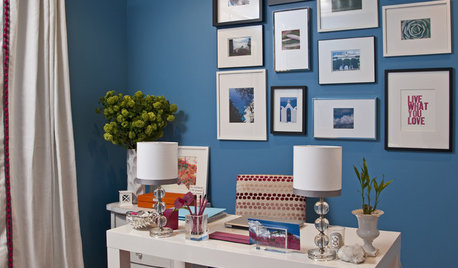
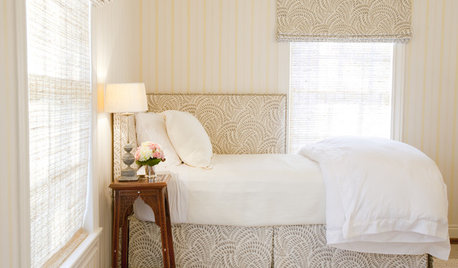

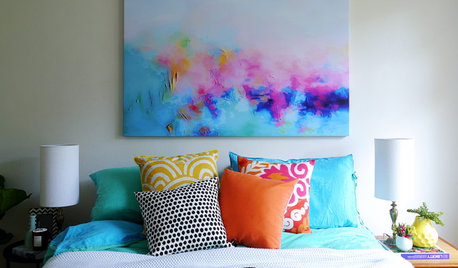

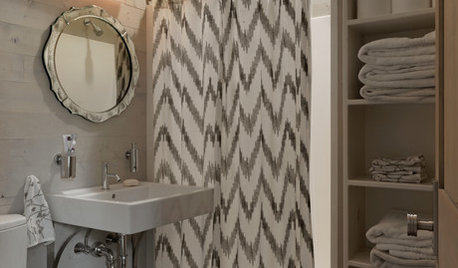







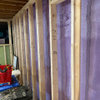
frank04090